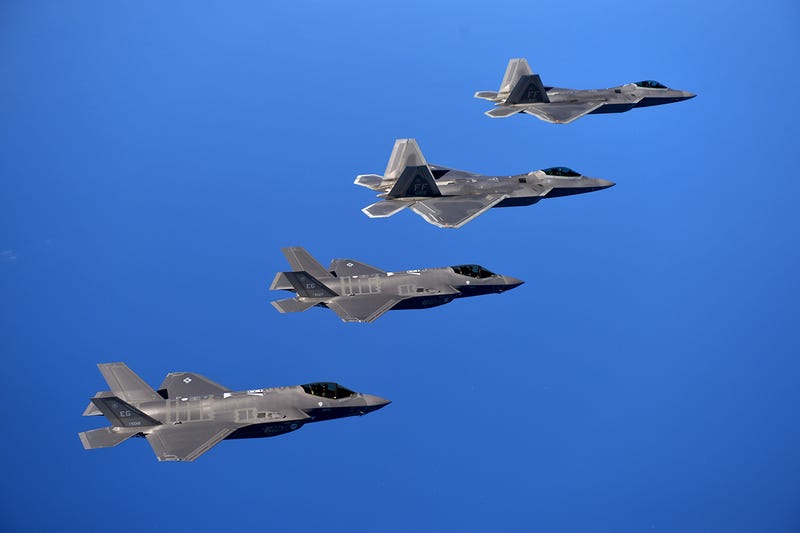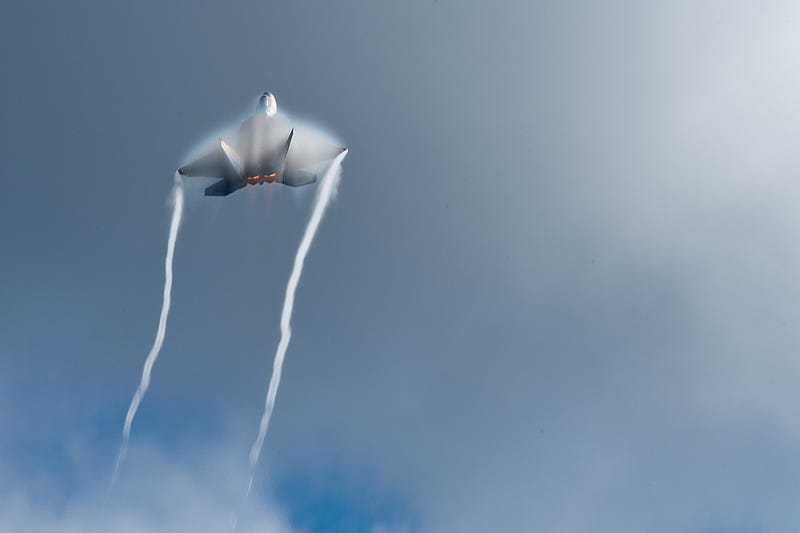Bernard
Junior Member
Continued***
At the time of the F-15C/D fleet’s grounding, Now these jets are slated to serve for decades to come in an attempt to fill the gap left by a curtailed F-22 production run. In order to do so, the “Golden Eagle” fleet of around 200 aircraft will require billions worth of upgrades, including both structural
With all this in mind, if we built enough F-22s to eradicate the enemy’s defenses, both in the air and on the ground, and improved the aircraft over time, perhaps even stretching it into an FB-22 with F-35 like avionics, would the USAF need an F-35A at all?
Instead, the force could be filled in by other high-end capabilities currently in the works, like a new long-range stealth bomber, stealthy standoff weapons and unmanned combat air vehicles. On the low-end side of the equation, plentiful, relatively cheap and proven platforms, like the F-16 and A-10, among others, could be available once air dominance has been achieved, or for lower-end conflicts that do not require the F-22’s high-end anti-access capabilities.
What makes things worse is that the floundering F-35 program has sucked funds for much needed upgrades on existing systems, including the F-22. In fact the
So what exactly happened here? If we clearly do not have enough F-22s today and it seemed nobody really thought we had enough at the time of its cancellation, aside from those with the power to kill the program, and the jet was passed over for the F-35, an aircraft that the USAF itself admits cannot fill the high-end role like the F-22, somewhere along the line disinformation was passed along to decision makers, or worse. So why don’t we pull those key decision makers in and have them explain exactly how they understood the situation at the time, what information and intelligence were they going off of, and who gave them that information and when?

The F-35 is said to be the biggest weapons program of all time, literally a $1.5 trillion income proposition over its lifetime. As such, it has a tremendous amount of special interest, Congressional and corporate “momentum” behind it. During the period of the F-22’s cancellation, the F-35’s problems were just becoming so serious that they could no longer be denied. Any competition threatened its existence, including the F-22, Lockheed’s own product. For the USAF, why dive into a pit of unknowns and cost and timeline overruns when you already had the best fighter in the world in production?
Yet given what we know now now publicly, the limitations of the F-35, especially in the air-to-air realm, could have made the decision to end the F-22 production much tougher. compared to reality.
Since there appears to be little will in Washington to correct the error in judgement that ended the F-22 line by putting an improved F-22 back into production, we need to learn from this very expensive mistake. This is especially relevant considering nearly $30 billion of the F-22’s nearly $70 billion program cost was spent to just develop the fighter. By better understanding what they knew and when they knew it, and above all else, where the information for their conclusions came from, we can at least try to avoid such procurement and strategy blunders in the future.

*Opinion* /non article
I agree with some of the comments from this article. Cutting the F-22 was one of the costliest strategic mistakes the United States has probably ever made?
At the time of the F-15C/D fleet’s grounding, Now these jets are slated to serve for decades to come in an attempt to fill the gap left by a curtailed F-22 production run. In order to do so, the “Golden Eagle” fleet of around 200 aircraft will require billions worth of upgrades, including both structural
With all this in mind, if we built enough F-22s to eradicate the enemy’s defenses, both in the air and on the ground, and improved the aircraft over time, perhaps even stretching it into an FB-22 with F-35 like avionics, would the USAF need an F-35A at all?
Instead, the force could be filled in by other high-end capabilities currently in the works, like a new long-range stealth bomber, stealthy standoff weapons and unmanned combat air vehicles. On the low-end side of the equation, plentiful, relatively cheap and proven platforms, like the F-16 and A-10, among others, could be available once air dominance has been achieved, or for lower-end conflicts that do not require the F-22’s high-end anti-access capabilities.
What makes things worse is that the floundering F-35 program has sucked funds for much needed upgrades on existing systems, including the F-22. In fact the
So what exactly happened here? If we clearly do not have enough F-22s today and it seemed nobody really thought we had enough at the time of its cancellation, aside from those with the power to kill the program, and the jet was passed over for the F-35, an aircraft that the USAF itself admits cannot fill the high-end role like the F-22, somewhere along the line disinformation was passed along to decision makers, or worse. So why don’t we pull those key decision makers in and have them explain exactly how they understood the situation at the time, what information and intelligence were they going off of, and who gave them that information and when?

The F-35 is said to be the biggest weapons program of all time, literally a $1.5 trillion income proposition over its lifetime. As such, it has a tremendous amount of special interest, Congressional and corporate “momentum” behind it. During the period of the F-22’s cancellation, the F-35’s problems were just becoming so serious that they could no longer be denied. Any competition threatened its existence, including the F-22, Lockheed’s own product. For the USAF, why dive into a pit of unknowns and cost and timeline overruns when you already had the best fighter in the world in production?
Yet given what we know now now publicly, the limitations of the F-35, especially in the air-to-air realm, could have made the decision to end the F-22 production much tougher. compared to reality.
Since there appears to be little will in Washington to correct the error in judgement that ended the F-22 line by putting an improved F-22 back into production, we need to learn from this very expensive mistake. This is especially relevant considering nearly $30 billion of the F-22’s nearly $70 billion program cost was spent to just develop the fighter. By better understanding what they knew and when they knew it, and above all else, where the information for their conclusions came from, we can at least try to avoid such procurement and strategy blunders in the future.

*Opinion* /non article
I agree with some of the comments from this article. Cutting the F-22 was one of the costliest strategic mistakes the United States has probably ever made?




